Vietnam is a happy country, the spiritual life of the people is always full of love for art and culture…
And despite being a small country, Vietnam has a long history of more than 2000 years. During that time, the cultural life of the people was enriched day by day, creating priceless intangible cultural heritages. Some of them were recognized by the international community.
TSA always pays attention to tourists’ cultural experiences. For TSA, providing tourists with invaluable cultural experiences is our success, so below are some suggestions we would like to recommend.
Music
- “Elegant” Nha Nhac - Vietnamese Court Music
- “Mysterious” Space of Gong Culture
- “Romantic” Quan ho Bac Ninh folk music - Alternate singing
- “Unique” Ca Trù - Tru singing
- "Generous" Art of Don Ca Tai Tu (Southern Folk Music)
- “Cheerful” Xoan singing
- “Sweet” Ví and Giặm folk music - Nghe An, Ha Tinh folk music
Rituals
- Giong Festival of Phu Dong and Soc Temple
- Worship of Hung Kings in Phu Tho
- Vietnamese belief in Mother Goddesses
Games
Music
Vietnam has mountains, plains, and coasts, Vietnam has experienced peace and war, Vietnam is where 54 ethnic groups live. All these thing were written in the lyrics of the songs, to create beautiful and particular kinds of traditional music.
“Elegant” Nha Nhac – Vietnamese Court Music
In 2003 , Nha nhac was originally proclaimed as the first Vietnamese’s Intangible Cultural Heritage of Humanity by UNESCO.
Nha nhac , “nha” means “elegant” , “nhac” means “music” , was an official form of royal music and dance performed at Vietnam Imperial court from Le Dynasty to Nguyen Dynasty ( 15th to mid-20th century). Contrary to the popular folk music Nha nhac was formally performed at important events of the Royal class such as anniversaries, coronations, funerals, festivals, or receptions.
A Nha nhac performance was generally very monumental in scale. It featured more than one hundred skillful performers including composers, musicians, singers, dancers with numerous traditional musical instruments including percussion type, woodwind type, string type.
Nha nhac plays an important role in Vietnam’s culture. It was not only an art performance but also the symbol of the powerful, prosperous and wealthy monarchy. Witnessing the prosperity and decline of the dynasties, Vietnam historical ups and downs, now Nha Nhac became a priceless gift from the past.
Nowaday, tourists can enjoy Nha nhac performance in Hue. You can sit on the dragon boat, listen to the traditional music, get a glimpse of the beautiful city, just let the boat float on the Perfume River, this will be an amazing experience in Hue.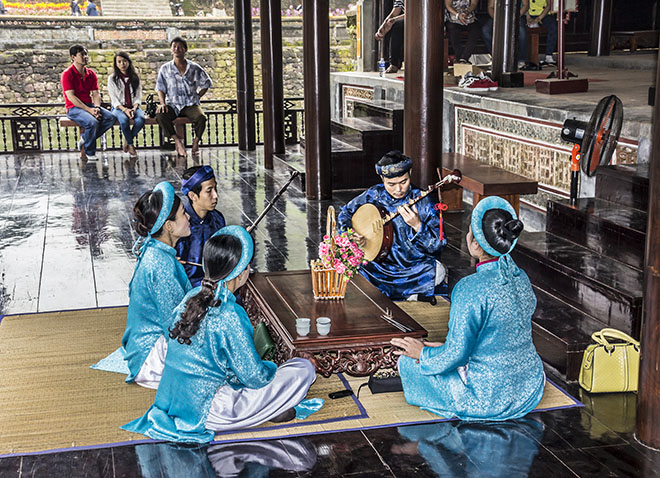
>> Read More: Nha nhac – Vietnam court music : Performace for the Kings and Queens
“Mysterious” Space of Gong Culture
In 2005, the Space of Gong culture was recognized as one of the “masterpieces of the Oral and Intangible Cultural Heritage of humanity” by UNESCO.
Gong performing is an important part in mysterious spiritual life of Vietnam’s ethnic minorities. They believe that gongs are the mean of communication between human and the supernatural world. This cultural space can only be found in several provinces of the central highlands of Vietnam :Kon Tum, Gia Lai, Đắk Lắk, Đắk Nông, and Lâm Đồng, separate from the busy cities
Gong is a round-shaped metal percussion instrument which is hit with a mallet. Traditionally, a gong performance are played by a group of villagers carrying gongs with different sizes in a wide space, manner of the performance is varies according to the custom of each village and its purpose, such as praying for an abundant crop, expressing grief to the fallen, celebrating victory, ….
For a thousand years, the connection between human and nature along with divine rituals in the central highlands of Vietnam has become a fascinating mystery for everyone who ever comes to this place, where life is still simple and wild. Are you an adventurous explorer? Discover it yourself in the Central Highlands’ annual gong festival or spring festival.

“Romantic” Quan ho Bac Ninh folk music – Alternate singing
Quan ho Bac Ninh folk music is a part of Vietnam’s cultural heritage and quintessence has been recognized by the international community in 2009.
Quan ho folk music is well-known in Northern Vietnam including 2 provinces: Bac Ninh and Bac Giang. The songs are performed as alternating verses between couples of men and women. Since Quan ho folk songs’ main theme is about love between young people, these songs can be considered as traditional “love songs” in Northern Vietnam’s culture.
In a Quan ho performance, there are usually one or two couples, or a group of male singers (lien anh) with a group of female singers (lien chi) from different villages. There are rules about costume, too: women wear four-part dress (ao tu than), a big round hat (non quai thao), while men wear tunics (ao the), turbans (khan xep) and bring black umbrellas. According to Vietnam’s tradition, a man is the one to cover up for his sweetheart, so the umbrella is the symbol of a protector, and the woman is often so discreet and shy when she’s in love, that’s why she carries a big hat to cover her face.
Quan ho folk songs express people’s true feelings in love, the happiness, sadness, remembrance, sulk…. The stories told by a traditional melodies are uncommon but as sweet and romantic as any classic love stories in the world.
>> Read More: Quan ho Bac Ninh folk songs : The stories of love
“Unique” Ca Trù – Tru singing
In 2009, Tru singing was added to the UNSCO’s list of Intangible Cultural Heritage of Humanity in Need of Safeguarding.
Tru singing is one of the most unique genre of folk music in Northern Vietnam due to it’s form, lyrics, melody and rhythm… The form of Tru singing generally comprises only one female vocalist with 3 simple instrument: “phach” (two wooden sticks beaten on a bamboo bar) played by herself, a 3-stringed lute by a lute player, a drum by a spectator, and their stage is just a sedge mat. No need for an orchestra, beautiful outfits, the stage seems super simple but Tru singing has very complex melodies and lyrics which require unique vocal methods, and only highly skilled vocalists with strong voice are selected to perform.
Because of Ca Tru’s complexity and high requirements, Ca Tru’s singer are getting less and less, but it’s still handed down from generation to generation, symbolizes the rustic but delicate and precise people of Northern Vietnam.
>> Read More: Ca Tru singing: Quintessence inside plainness
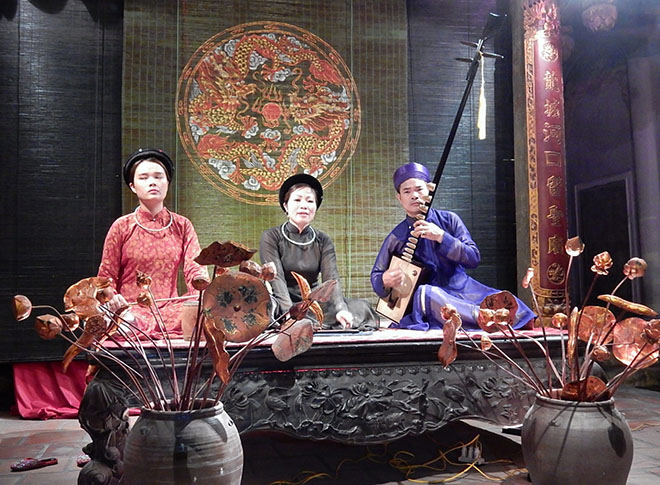
“Generous” Art of Don Ca Tai Tu (Southern Folk Music)
“Don ca tai tu” was officially recognized as the masterpiece of the Oral and Intangible Cultural Heritage of Humanity in 2013.
Unlike the others forms performing arts, Don ca tai tu originated from the Southern famers’ daily life for the entertainment purpose, when the neighbors gathered together to sing and relax after working hours. Appeared in the late 19th century, which is much younger than other traditional music, Don ca tai tu is still a popular art form in Mekong Delta areas.
Typically, a Don ca tai tu orchestra mainly comprises 5 types of instruments: zither, ty ba lute , moon-shaped lute, two-stringed fiddle, thee-stringed lute, and sometimes bamboo flute. They usually perform at traditional parties, weddings, festivals… so the melodies are often cheerful and generous. Each song is a story about the Southern people, whose life intimately connects to the land and rivers of Mekong Delta.
Today, it is not difficult to find Don ca tai tu performances during the holidays and festivals of the Southern Vietnam, the people here always happily welcome you to join with them. So if you come to this place, definitely don’t miss the chance to enjoy this delightful kind of music.
>> Read More: Don ca tai tu : Inner voice of the Southern people
“Cheerful” Xoan singing
Xoan singing was inscribed in 2017 on the Representative List of the Intangible Cultural Heritage of Humanity.
Xoan singing was a kind of performing art can be found in Phu Tho Province – a part of the first Vietnamese state under the Hung Kings’ dynasty. This genre of Vietnamese folk music is annually performed in spring as a practice to honor Hung Kings and worship the Village Guardian Gods; wish for an abundant crop in the new year; and express love between men and women … It is believed to have appeared since Hung Kings dynasty, that means it has been maintained by the descendants of Hung Kings for more than 2000 years.
Xoan singing is a range of movements including singing, dancing, drumming and clapper beating. The male singers were called “kep” and the female singers were called “dao”, the instruments are only a few drums and cappers. In the performance, the singers dance together with a happy smile on the face, sing the cheerful and simple melodies, looks like they are having fun in the spring festivals.
Nowadays, Xoan singing isn’t only performed in spring festivals but also the whole year in Phu Tho, there are even classes for anyone who wants to experience this genre of music.
“Sweet” Ví and Giặm folk music – Nghe An, Ha Tinh folk music
Nghe Tinh’s Vi and Giam folk singing became one of the Oral and Intangible Cultural Heritage of humanity in 2014.
This type of folk singing is popular in Nghe An and Ha Tinh Province (known as Nghe Tinh area). These songs were traditionally sung by the local people in daily life when they were working in the fields, rowing boats , lulling the children, … The lyrics of Vi and Giam folk song are words from the heart of the local people, sung with the gently particular voice of the women in Central Vietnam, so the melody of Vi Giam folk songs is often soothing and sweet.
Today it is getting more popular and commonly performed in festivals and theaters, from solo to duet singing, along with other genres of music recognized by UNESCO as Intangible heritage of Humanity, Vi and Giam folk singing has become the pride of Vietnamese.
Rituals
Giong Festival of Phu Dong and Soc Temple
Giong Festival of Phu Dong and Soc Temple was the first ritual of Vietnam to be inscribed on Representative List of the Intangible Cultural Heritage of Humanity in 2010.
The Giong Festival is celebrated annually in Hanoi in commemoration and praise of the mythical Saint Giong, one of the Four Immortals in Vietnam’s legends. According to the “Saint Giong” legend, in the 6th Hung King’s dynasty, Giong was born in a poor family, he couldn’t talk or walk until 3 years old, when the country encountered the northern invaders, he magically grew in size to be a giant hero, then he rode on an iron horse and use the bamboo trees as lances to lead the kingdom to victory against the enemies. Although Saint Giong is just an imaginary figure, he symbolized the courage of Vietnamese in the struggle against foreign invaders for over 1000 years.
The Festival typically takes place in spring at Phu Dong Temple (Gia Lam Dist, Hanoi) – where Saint Giong was born, and Soc Temple (Soc Son Dist, Hanoi)-where he stopped after defeating the enemies. During the festival, there are many traditional rituals such as procession ceremony, incense offering ceremony, bathing Saint’s statue ritual, bamboo flower offering ceremony,re-enact Giong’s feats, flag dance…. Besides, there are also many interesting games such as Chinese chess, human chess, cock fighting… and other activities like dancing, singing,…
Worship of Hung Kings in Phu Tho
Being one of the most significant ceremonies to all Vietnamese, Worship of Hung Kings was inscribed in 2012 on the Representative List of the Intangible Cultural Heritage of Humanity.
Under the Nguyen Dynasty, March 10 of the lunar calendar was selected as a national Hung Kings’ anniversary, so annually from the beginning of the third lunar month, millions of Vietnamese people converge on the Hung temple in Phu Tho province to commemorate their ancestors – Lac Long Quan, Au Co and the Hung Kings. According to Vietnam’s legend, Lac Long Quan, the child of Dragon, and Au Co, a fairy, fell in love and got married. Later Au Co gave birth to a sac containing 100 eggs from which 100 children were born. But Lac Long Quan was the Dragon’s descendant from the ocean and Au Co was a fairy on land, so they had to separated, 50 of the children follow the father to the seawards, the others follow the mother to the mountain and founded Van Lang Nation, the eldest son became the first king called Hung King. The children of Lac Long Quan and Au Co were the first Vietnamese to be born.
The Hung Kings temple of Phu Tho Province is where the Ancestral Anniversary takes place. People offer chung cake and giay cake to honor Hung Kings and also hold numerous traditional activities and games. Not only in Phu Tho province, but people all around the country, even the Vietnamese living in other countries also celebrate this day.
Vietnamese belief in Mother Goddesses
Vietnamese belief in Mother Goddesses was recognized as the Intangible culture heritage of Humanity in 2016.
Belief in Mother Goddesses one of the most sacred and long-standing rituals in Vietnam, this custom can be found throughout the country, but it’s not the same in each region. In some areas, Mother Goddesses are considered to control everything about nature and play an extremely important role in agricultural culture of Vietnam, they are the Goddesses of Heaven (Lieu Hanh); Water (Thoai); Mountains and Forests(Thuong Ngan). In some other areas, Mother Goddesses can be mythic figures, or real historical figures.
When the ritual is carried out, a spirit medium will call upon an incarnation of one of the Mother Goddesses, so that the help seekers will have the chance to express their problems or wishes to the God or Goddess. The spirit medium is the one selected by the Goddesses, not just a trained one. This is a sacred ritual, so it only appears in worship spaces such as temples, pagodas, and must be well-prepared. Since this ritual is a fusion of different religions, and also influenced by local culture, it is so complex and mysterious that even science can not explain.
>> Read More: Vietnamese belief in the Mother Goddesses: Mysterious miracles from Mothers
Games
Tugging rituals and games
In 2015, UNESCO recognize Vietnam’s Tugging rituals and games as a Intangible Cultural Heritage of Humanity
Tugging is a popular game that can be found in any festivals, holidays, sport competitions in Vietnam and some other Southeast Asian countries. In some areas of Vietnam, tugging is an indispensable ritual in their festival. This game isn’t just an entertainment, it is a sport that requires player’s strength, endurance, solidarity and tactics.
The general rule is: The players are divided into 2 teams with the same number of members, each team holds one end of a rope attempting to tug it from the other The middle of the rope is tied with a red cloth to mark, the cloth is pulled to which side will that team win. . The teams will compete in pairs until they find out the champion. The game has many variations in each area, but they all present Vietnamese young people’s strength and tighten community unity.
The art of Bai Choi
The art of Bai Choi in Central Vietnam officially became one of the Vietnam’s Intangible Cultural Heritage in 2017.
Bai choi was a manner of entertainment in Central Vietnam, “bai” was card game, and “choi” was a type of bamboo hut,so the name means playing card in a hut, this game were usually played by the women in Central Vietnam during Tet holiday long time ago. Gradually , it enlarged in scale then “Bai choi performance” appeared and became a significant festival of the local community.
Bai choi performance is the combination of singing, acting, reciting, painting,…with the support of the traditional instruments such as drums, monochord, trumpet… It originated from a popular game among the working class to help them relax after exhausted working days, so it has simple lyrics, lively melodies and always bring joy and cheers to the audience. The lyrics are usually stories of the labourers’s life: their love for the homeland, their filial piety, life experiences… which teach their descendants to be the good citizen.
>> Read More: Bai Choi – A Bold Stroke Of Traditional Culture In The Middle Of Vietnam
Like other Intangible cultural heritages, Vietnam’s cultural heritages have an extremely important meaning to Vietnam and mankind, that is bringing colors the human life. So what are you waiting for? Come to Vietnam now, to see, to feel, and to live a beautiful life right here.

I was born in the middle of a city where crazy traffic and noise were my childhood’s fear. But life is too short to just stay safe in my little home, traveling can not be a dream forever, and so, I stepped outside that door and hit the road...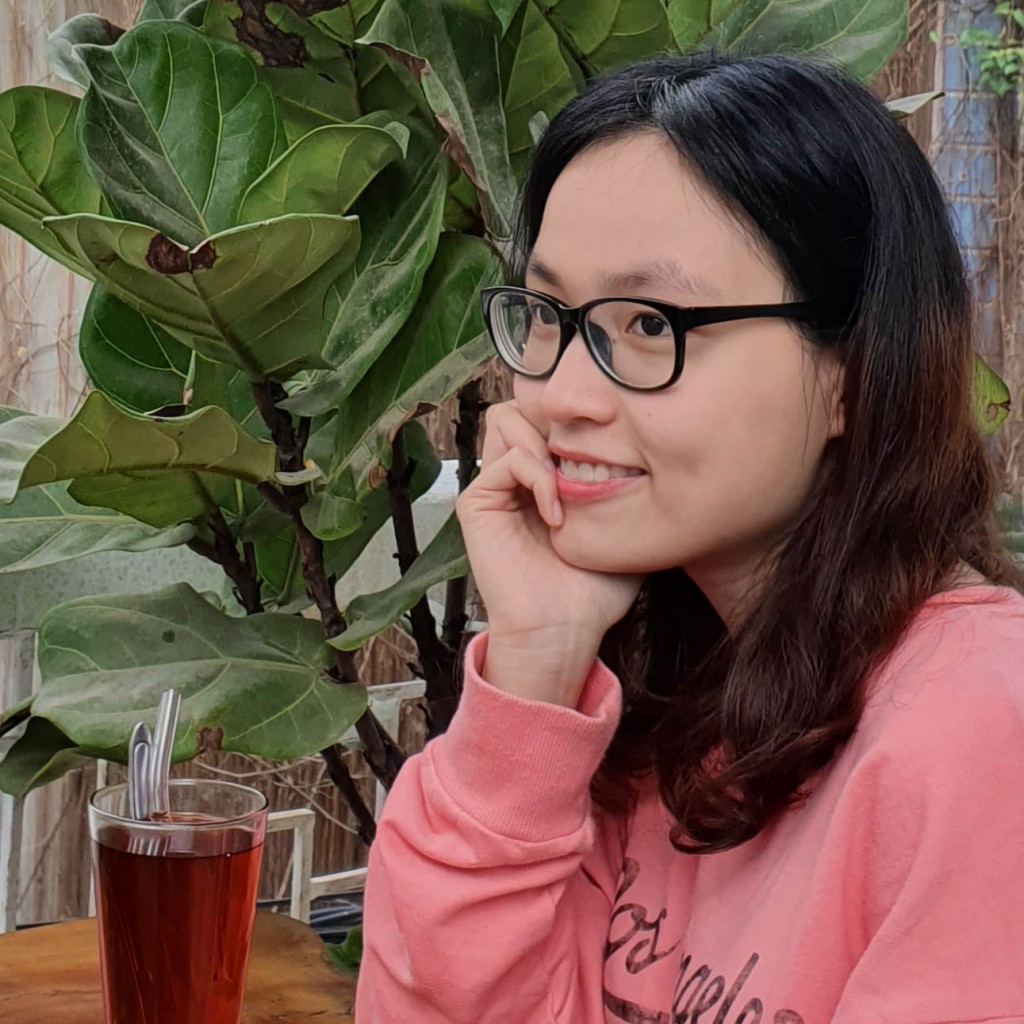 Mia
Mia
Experience with us:
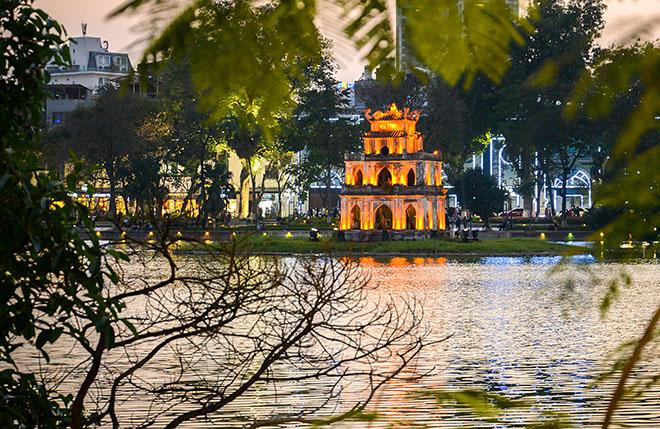
Vietnam Highlights Package 10 Days 9 Nights
The most popular destinations in Vietnam with all the highlights — all in Vietnam itinerary 10 days. Discover Hanoi with many foods, structure architecture and the stunningly beautiful UNESCO World Heritage Site of Halong Bay. Moving to culturally-rich Hue then spend time in incomparable and lovely Hoi An – one of the world’s most charming towns. Finish the comprehensive Vietnam highlights tours in the South after Floating through the lush Mekong Delta, seeing vibrant Ho Chi Minh City.
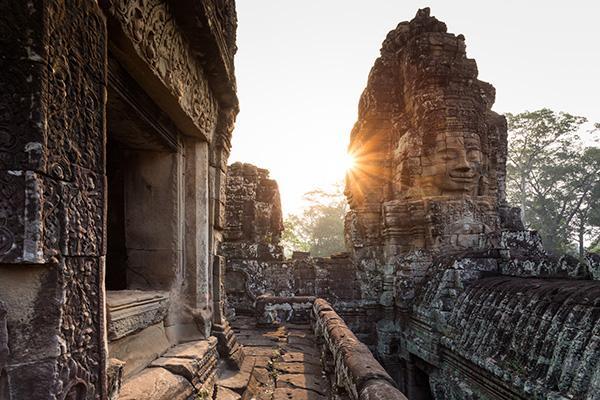
Indochina Heritage Line 15 Days 14 Nights
For at least once in your life, you should set foot at the gem of Asia – Indochina. The place becomes a dream destination for its images of famed historical sites, beautiful beaches and stunning landscapes, which will surely blow your mind and fulfill your heart!
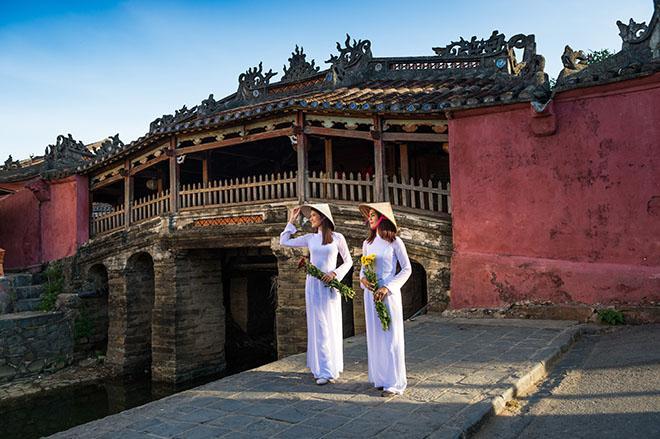
A glance of Vietnam and Cambodia 11 days 10 nights
It’s not an overstatement that this package gives you a complete grasp of the South East Asia spirit within just 1 trip. The spectacular nature that will definitely make you hold your breath comes from Ha Long Bay – One of 7 Natural Wonders of the World while the cultural value is highlighted in Angkor Wat (Siem Reap). With various local activities like farming, float shopping, traditional cooking,… you will have enough diverse experience to gain a true insight into the 2 countries.



Comments
Leona Eades
Every weekend i used to pay a visit this web page, for the reason that i wish for enjoyment, since this this web site conations truly nice funny material too.